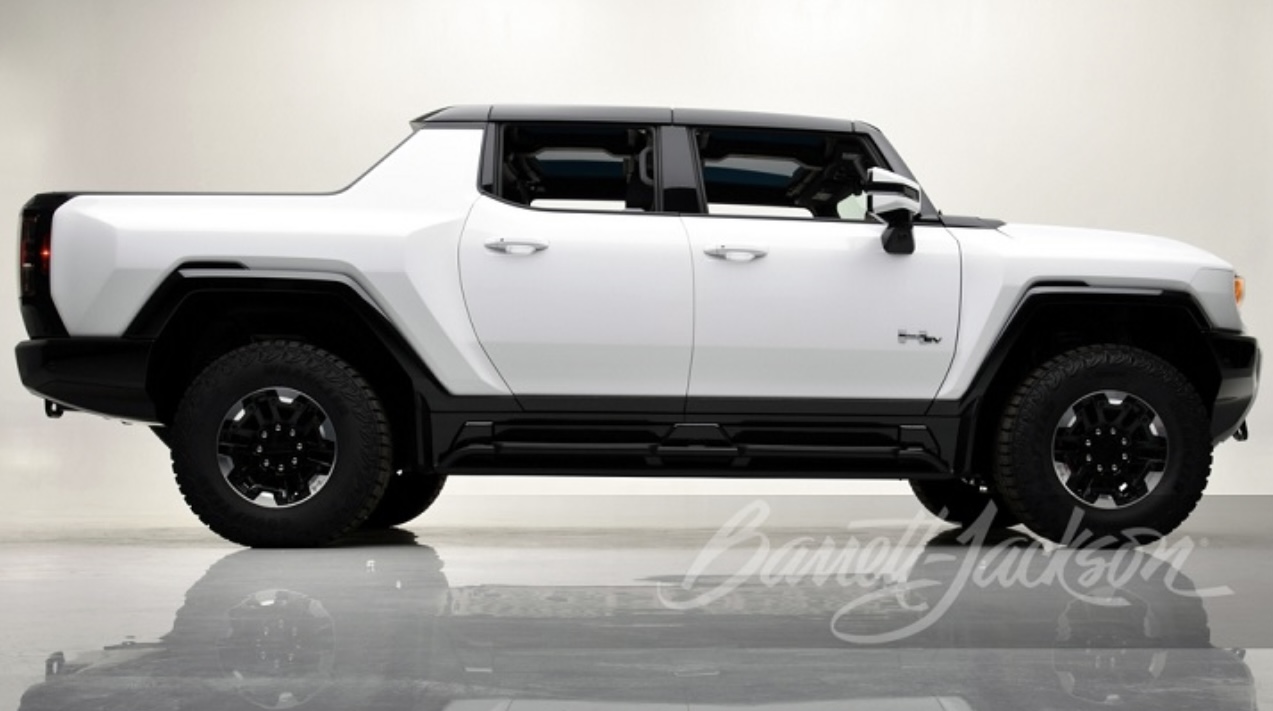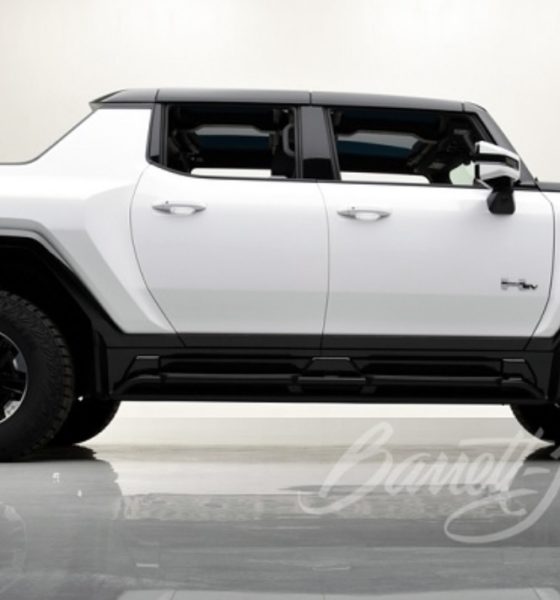

News
GM employs Tesla-esque direct-to-consumer sales strategy in China
General Motors (GM) plans to launch a wholly-owned direct sales platform, Durant Guild, in China. With Durant Guild, GM hopes to revitalize Chinese consumers’ interest in its brand and increase sales in the country.
What is Durant Guild?
Durant Guild is named after GM’s founder William Durant. Felix Weller will head the platform. Through the direct sales platform, the legacy automaker plans to import and sell vehicles in China that have only been sold in the United States thus far, like the Hummer EV pickup truck or its SUV counterpart.
Durant Guild will adopt similar sales and marketing strategies that worked for Tesla and Apple. The direct sales platform will organize invitation-only events. It will also set up experience centers and pop-up shops throughout China.
However, the GM seems determined for Durant Guild to develop its own presence in the country. Durant Guild plans to create events and shops in unique locations to generate interest. For example, Weller shared that the platform will try to place experience centers in areas besides shopping malls, like Tesla and other EV startups.
Durant Guild’s Goals
The head of GM China, Julian Blissett, noted that the OEM’s goal with Durant Guild isn’t to sell volume but instead change the perception Chinese consumers have about General Motors. GM wants Durant Guild to build interest in cars previously only sold in the US. It hopes that some of that interest goes back to the vehicles GM is currently selling in China.
“Durant Guild is not a volume play, but if we do a good job and the products sell well, it will create a lot of buzz around Cadillac and Chevy and will help how people perceive our products and technology,” Blissett commented.
As per Reuters, General Motors’ sales of flagship brands like Buick, Cadillac, and Chevrolet have continued to plummet over the past five years. GM sales in China have dropped to 1.3 million cars a year. The legacy automaker’s market share slices have been eaten up by smart electric vehicles, like Tesla or China-based EV startups like NIO and BYD.
Challenges to GM’s Direct-to-Consumer Strategy
Blissett mentioned a shift in the Chinese market for “halo cars.” Consumers in cities have specifically started to show growing interest in performance vehicles for racing and SUVs for more off-road adventures. So General Motors hopes to attract three types of customers with Durant Guild: nature lovers; executive VIPs; and young, sporty drivers.
Chee-Kiang Lim, US-based Urban Science’s Managing Director for China, advised that GM also consider Chinese consumers’ growing interest in smart, connected features.
“What Chinese consumers want is to extend their digital lifestyles to their cars. Cars from foreign brands designed and engineered overseas are increasingly not meeting these needs,” he said.
“If Durant can overcome this bias and provide high-tech, personalized features and seamless connectivity to China’s digital ecosystems, its odds of success in the China marketplace will be higher,” Lim added.
Given the growing interest in more tech-savvy vehicles in China, General Motors would have to carefully select the cars it offers under Durant Guild. Tesla vehicles and even units from EV startups like NIO understand the tech and features people want integrated into their cars. General Motors would need to introduce similar tech or features in its vehicles to compete with newer, smarter cars.
The Teslarati team would appreciate hearing from you. If you have any tips, contact me at maria@teslarati.com or via Twitter @Writer_01001101.

Elon Musk
Starlink passes 9 million active customers just weeks after hitting 8 million
The milestone highlights the accelerating growth of Starlink, which has now been adding over 20,000 new users per day.

SpaceX’s Starlink satellite internet service has continued its rapid global expansion, surpassing 9 million active customers just weeks after crossing the 8 million mark.
The milestone highlights the accelerating growth of Starlink, which has now been adding over 20,000 new users per day.
9 million customers
In a post on X, SpaceX stated that Starlink now serves over 9 million active users across 155 countries, territories, and markets. The company reached 8 million customers in early November, meaning it added roughly 1 million subscribers in under seven weeks, or about 21,275 new users on average per day.
“Starlink is connecting more than 9M active customers with high-speed internet across 155 countries, territories, and many other markets,” Starlink wrote in a post on its official X account. SpaceX President Gwynne Shotwell also celebrated the milestone on X. “A huge thank you to all of our customers and congrats to the Starlink team for such an incredible product,” she wrote.
That growth rate reflects both rising demand for broadband in underserved regions and Starlink’s expanding satellite constellation, which now includes more than 9,000 low-Earth-orbit satellites designed to deliver high-speed, low-latency internet worldwide.
Starlink’s momentum
Starlink’s momentum has been building up. SpaceX reported 4.6 million Starlink customers in December 2024, followed by 7 million by August 2025, and 8 million customers in November. Independent data also suggests Starlink usage is rising sharply, with Cloudflare reporting that global web traffic from Starlink users more than doubled in 2025, as noted in an Insider report.
Starlink’s momentum is increasingly tied to SpaceX’s broader financial outlook. Elon Musk has said the satellite network is “by far” the company’s largest revenue driver, and reports suggest SpaceX may be positioning itself for an initial public offering as soon as next year, with valuations estimated as high as $1.5 trillion. Musk has also suggested in the past that Starlink could have its own IPO in the future.
News
NVIDIA Director of Robotics: Tesla FSD v14 is the first AI to pass the “Physical Turing Test”
After testing FSD v14, Fan stated that his experience with FSD felt magical at first, but it soon started to feel like a routine.

NVIDIA Director of Robotics Jim Fan has praised Tesla’s Full Self-Driving (Supervised) v14 as the first AI to pass what he described as a “Physical Turing Test.”
After testing FSD v14, Fan stated that his experience with FSD felt magical at first, but it soon started to feel like a routine. And just like smartphones today, removing it now would “actively hurt.”
Jim Fan’s hands-on FSD v14 impressions
Fan, a leading researcher in embodied AI who is currently solving Physical AI at NVIDIA and spearheading the company’s Project GR00T initiative, noted that he actually was late to the Tesla game. He was, however, one of the first to try out FSD v14.
“I was very late to own a Tesla but among the earliest to try out FSD v14. It’s perhaps the first time I experience an AI that passes the Physical Turing Test: after a long day at work, you press a button, lay back, and couldn’t tell if a neural net or a human drove you home,” Fan wrote in a post on X.
Fan added: “Despite knowing exactly how robot learning works, I still find it magical watching the steering wheel turn by itself. First it feels surreal, next it becomes routine. Then, like the smartphone, taking it away actively hurts. This is how humanity gets rewired and glued to god-like technologies.”
The Physical Turing Test
The original Turing Test was conceived by Alan Turing in 1950, and it was aimed at determining if a machine could exhibit behavior that is equivalent to or indistinguishable from a human. By focusing on text-based conversations, the original Turing Test set a high bar for natural language processing and machine learning.
This test has been passed by today’s large language models. However, the capability to converse in a humanlike manner is a completely different challenge from performing real-world problem-solving or physical interactions. Thus, Fan introduced the Physical Turing Test, which challenges AI systems to demonstrate intelligence through physical actions.
Based on Fan’s comments, Tesla has demonstrated these intelligent physical actions with FSD v14. Elon Musk agreed with the NVIDIA executive, stating in a post on X that with FSD v14, “you can sense the sentience maturing.” Musk also praised Tesla AI, calling it the best “real-world AI” today.
News
Tesla AI team burns the Christmas midnight oil by releasing FSD v14.2.2.1
The update was released just a day after FSD v14.2.2 started rolling out to customers.

Tesla is burning the midnight oil this Christmas, with the Tesla AI team quietly rolling out Full Self-Driving (Supervised) v14.2.2.1 just a day after FSD v14.2.2 started rolling out to customers.
Tesla owner shares insights on FSD v14.2.2.1
Longtime Tesla owner and FSD tester @BLKMDL3 shared some insights following several drives with FSD v14.2.2.1 in rainy Los Angeles conditions with standing water and faded lane lines. He reported zero steering hesitation or stutter, confident lane changes, and maneuvers executed with precision that evoked the performance of Tesla’s driverless Robotaxis in Austin.
Parking performance impressed, with most spots nailed perfectly, including tight, sharp turns, in single attempts without shaky steering. One minor offset happened only due to another vehicle that was parked over the line, which FSD accommodated by a few extra inches. In rain that typically erases road markings, FSD visualized lanes and turn lines better than humans, positioning itself flawlessly when entering new streets as well.
“Took it up a dark, wet, and twisty canyon road up and down the hill tonight and it went very well as to be expected. Stayed centered in the lane, kept speed well and gives a confidence inspiring steering feel where it handles these curvy roads better than the majority of human drivers,” the Tesla owner wrote in a post on X.
Tesla’s FSD v14.2.2 update
Just a day before FSD v14.2.2.1’s release, Tesla rolled out FSD v14.2.2, which was focused on smoother real-world performance, better obstacle awareness, and precise end-of-trip routing. According to the update’s release notes, FSD v14.2.2 upgrades the vision encoder neural network with higher resolution features, enhancing detection of emergency vehicles, road obstacles, and human gestures.
New Arrival Options also allowed users to select preferred drop-off styles, such as Parking Lot, Street, Driveway, Parking Garage, or Curbside, with the navigation pin automatically adjusting to the ideal spot. Other refinements include pulling over for emergency vehicles, real-time vision-based detours for blocked roads, improved gate and debris handling, and Speed Profiles for customized driving styles.








